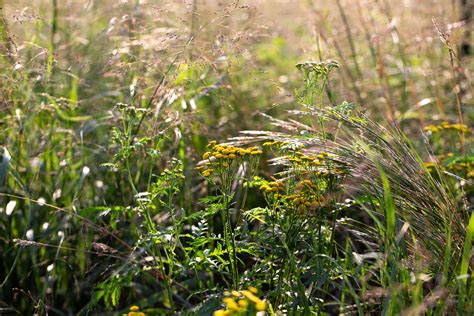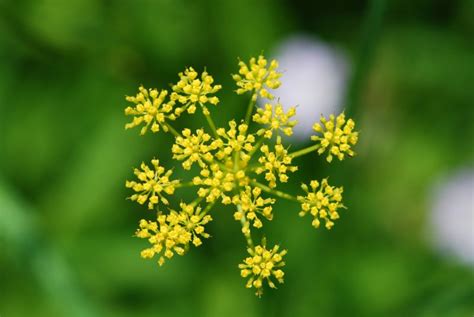Wild parsnip, a plant native to Europe and Asia, has become a common sight in many parts of North America, particularly in fields, roadsides, and other areas with disturbed soil. While it may appear harmless, wild parsnip contains a toxic compound called furanocoumarin, which can cause a severe skin reaction known as phytophotodermatitis or wild parsnip rash. This condition occurs when the plant's sap comes into contact with human skin, followed by exposure to sunlight, resulting in a painful and potentially long-lasting rash.
The wild parsnip plant, scientifically known as Pastinaca sativa, grows up to 5 feet tall and has yellowish-green flowers that bloom from June to August. Its stems and leaves contain the toxic sap, which can be released when the plant is bruised, cut, or crushed. People who handle the plant or accidentally brush against it may transfer the sap to their skin, setting the stage for a severe reaction. The severity of the rash can vary depending on the amount of sap that comes into contact with the skin, the duration of sunlight exposure, and individual sensitivity.
Key Points
- Wild parsnip contains the toxic compound furanocoumarin, which can cause phytophotodermatitis or wild parsnip rash.
- The rash occurs when the plant's sap comes into contact with human skin, followed by exposure to sunlight.
- Symptoms of wild parsnip rash include redness, blisters, and long-lasting hyperpigmentation.
- Avoiding contact with the plant and wearing protective clothing can help prevent the rash.
- Treatment options include topical corticosteroids, cool compresses, and avoiding further sunlight exposure.
Causes and Symptoms of Wild Parsnip Rash

The primary cause of wild parsnip rash is the contact between the plant’s sap and human skin, followed by exposure to sunlight. The furanocoumarin in the sap reacts with the ultraviolet (UV) rays in sunlight, leading to the formation of toxic compounds that damage skin cells and cause inflammation. Symptoms of wild parsnip rash typically appear within 24 to 48 hours after exposure and may include redness, blisters, and long-lasting hyperpigmentation. In severe cases, the rash can lead to scarring and permanent skin discoloration.
Prevention and Treatment Options
Preventing wild parsnip rash involves avoiding contact with the plant and taking precautions when handling or working near areas where it grows. Wearing protective clothing, including long sleeves, pants, and gloves, can help minimize the risk of exposure. If contact with the plant occurs, washing the affected area with soap and water as soon as possible can help reduce the severity of the reaction. Treatment options for wild parsnip rash include topical corticosteroids to reduce inflammation, cool compresses to alleviate discomfort, and avoiding further sunlight exposure to prevent worsening of the condition.
| Prevention and Treatment Measures | Effectiveness |
|---|---|
| Avoiding contact with the plant | Highly effective in preventing the rash |
| Wearing protective clothing | Effective in minimizing skin exposure |
| Washing the affected area with soap and water | Helps reduce the severity of the reaction |
| Topical corticosteroids | Effective in reducing inflammation and alleviating symptoms |

Complications and Long-Term Effects

In some cases, wild parsnip rash can lead to complications such as scarring, permanent skin discoloration, and increased risk of skin cancer. The hyperpigmentation caused by the rash can be particularly challenging to treat and may last for several months or even years. It is essential to seek medical attention if the rash is severe, covers a large area of the body, or is accompanied by other symptoms such as fever, chills, or difficulty breathing.
Public Health Concerns and Awareness
Wild parsnip rash is a significant public health concern, particularly in areas where the plant is common. Raising awareness about the risks associated with wild parsnip and promoting preventive measures can help reduce the incidence of this condition. Public health campaigns, educational programs, and community outreach initiatives can play a crucial role in educating people about the dangers of wild parsnip and the importance of taking precautions when working or recreating in areas where the plant grows.
What is wild parsnip rash, and how does it occur?
+Wild parsnip rash, also known as phytophotodermatitis, occurs when the sap of the wild parsnip plant comes into contact with human skin, followed by exposure to sunlight. The furanocoumarin in the sap reacts with UV rays, leading to skin damage and inflammation.
How can I prevent wild parsnip rash?
+To prevent wild parsnip rash, avoid contact with the plant, wear protective clothing, and wash the affected area with soap and water as soon as possible if exposure occurs.
What are the symptoms of wild parsnip rash?
+Symptoms of wild parsnip rash include redness, blisters, and long-lasting hyperpigmentation. In severe cases, the rash can lead to scarring and permanent skin discoloration.
Meta description suggestion: “Learn about wild parsnip rash, a painful skin condition caused by contact with the wild parsnip plant and sunlight. Discover prevention and treatment options, complications, and long-term effects.” (140-155 characters)
